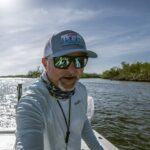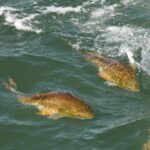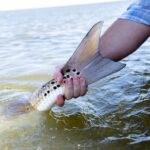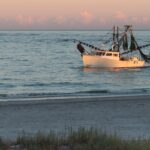
A Veteran Guide’s View of Jacks
If you’ve spent any time on the water in South Florida, chances are you’ve heard
It was a long Atlantic States Marine Fisheries Commission meeting last week. The Annual Meeting was packed with important agenda items and policy updates. The ASGA team was fully tuned in throughout the meetings, but all eyes were intently waiting for the Striped Bass Board, as news the week prior of another failed striped bass spawn in the Chesapeake Bay was sure to make things interesting. All in all, it was an OK meeting—the Striped Bass Board fulfilled its primary objective of approving Draft Addendum II and even meaningfully pared the document down, streamlining public engagement. However, we fear that even in its best possible final-form Addendum II will not be enough to get the striped bass stock back on track, given five consecutive years of poor (cough, cough failed) recruitment in Chesapeake Bay. Here are some of the main takeaways from the ASMFC’s 2023 Annual Meeting.

Striped Bass
Everything Else:
There’s a quick update from last week’s ASMFC meeting. Stay on the lookout for ASGA’s advocacy guide for Draft Addendum II and how you can best assist efforts to responsibly manage striped bass and rebuild this fishery by 2029!

If you’ve spent any time on the water in South Florida, chances are you’ve heard

Photo Credit: Graham Tayloe Big Win for Redfish in Alabama Huge news from the Marine

Feature Photo: Carter Abramson | Simms Fishing at the Fisheries Science Symposium We have more

Each year, hundreds of millions of fish are killed as collateral damage from large-scale, inshore
We rely on our members and donations to keep fighting for a sustainable tomorrow in marine conservation.
GIVE THE GIFT OF FISHERIES CONSERVATION THIS HOLIDAY SEASON. SHOP ASGA GOODS THAT FUND FISHERIES RESEARCH & ADVOCACY CAMPAIGNS
JOIN ASGA IN CALLING FOR CRITICAL MANAGEMENT ACTION AFTER YEARS OF SPAWN FAILURES & POOR MANAGEMENT.
By using this website, you agree to our use of cookies. We use cookies to provide you with a great experience and to help our website run effectively. To learn more, please review our privacy policy.
One Response
Tony: thanks for your continued focus on both process and outcomes. Pleased to support ASGA. Appreciated our conversation last week.